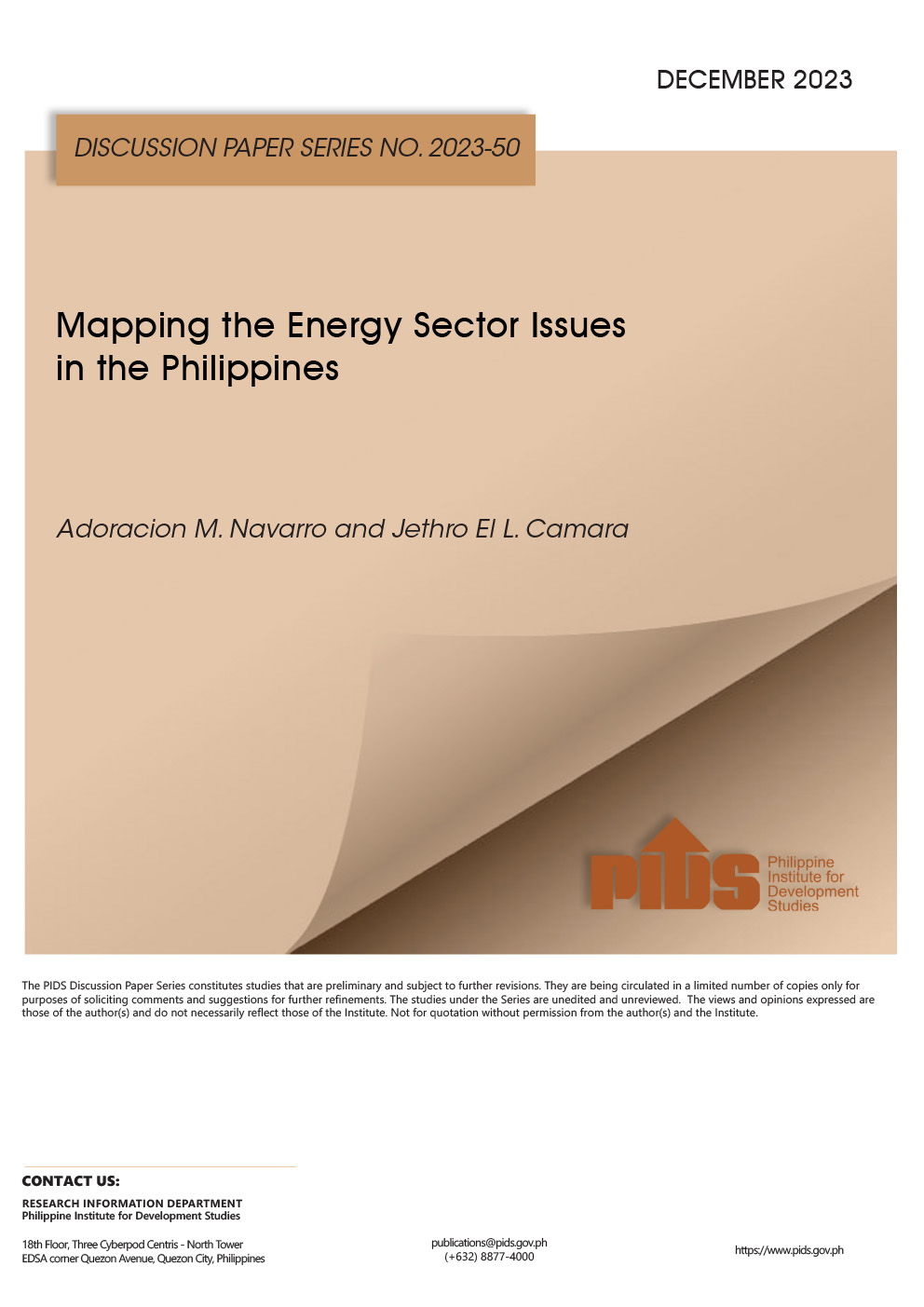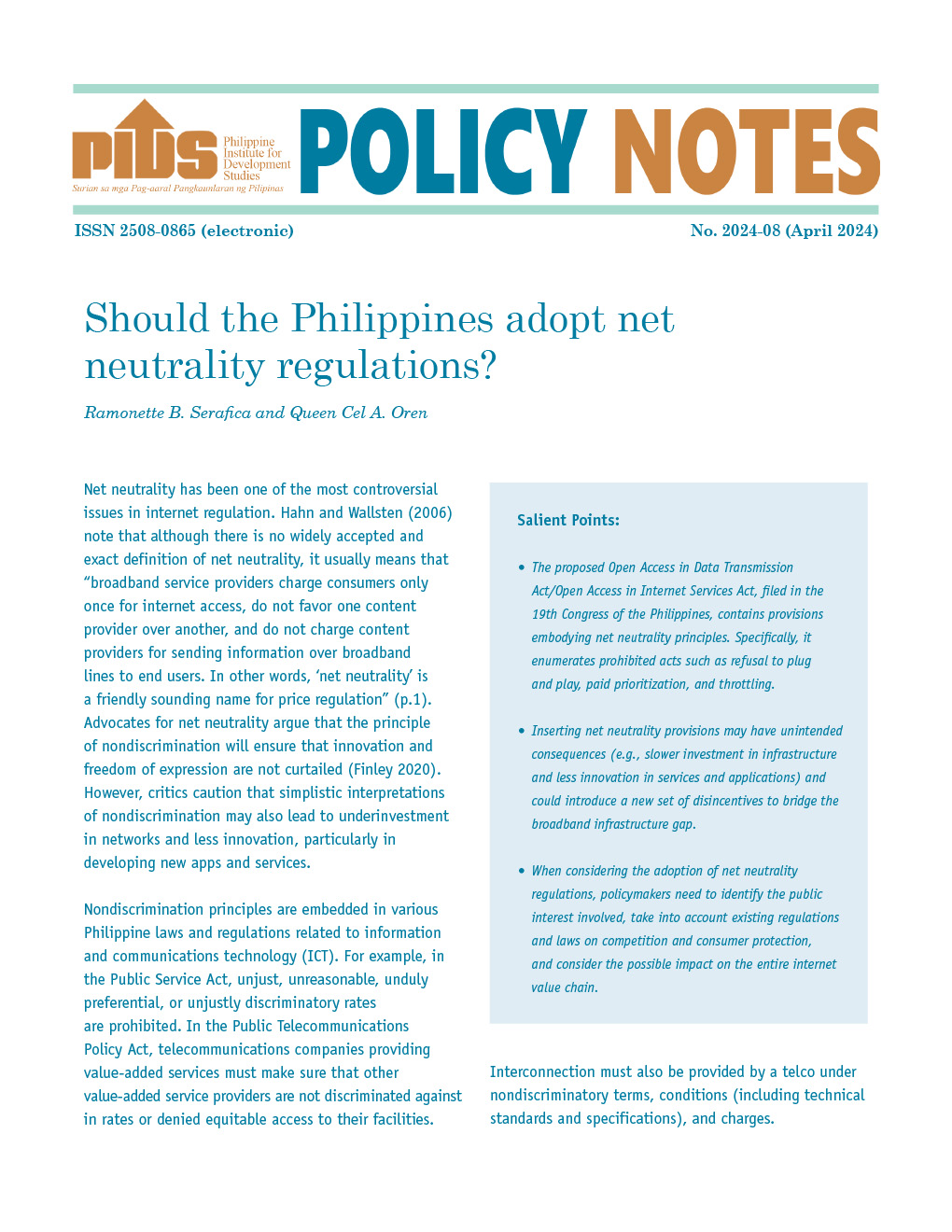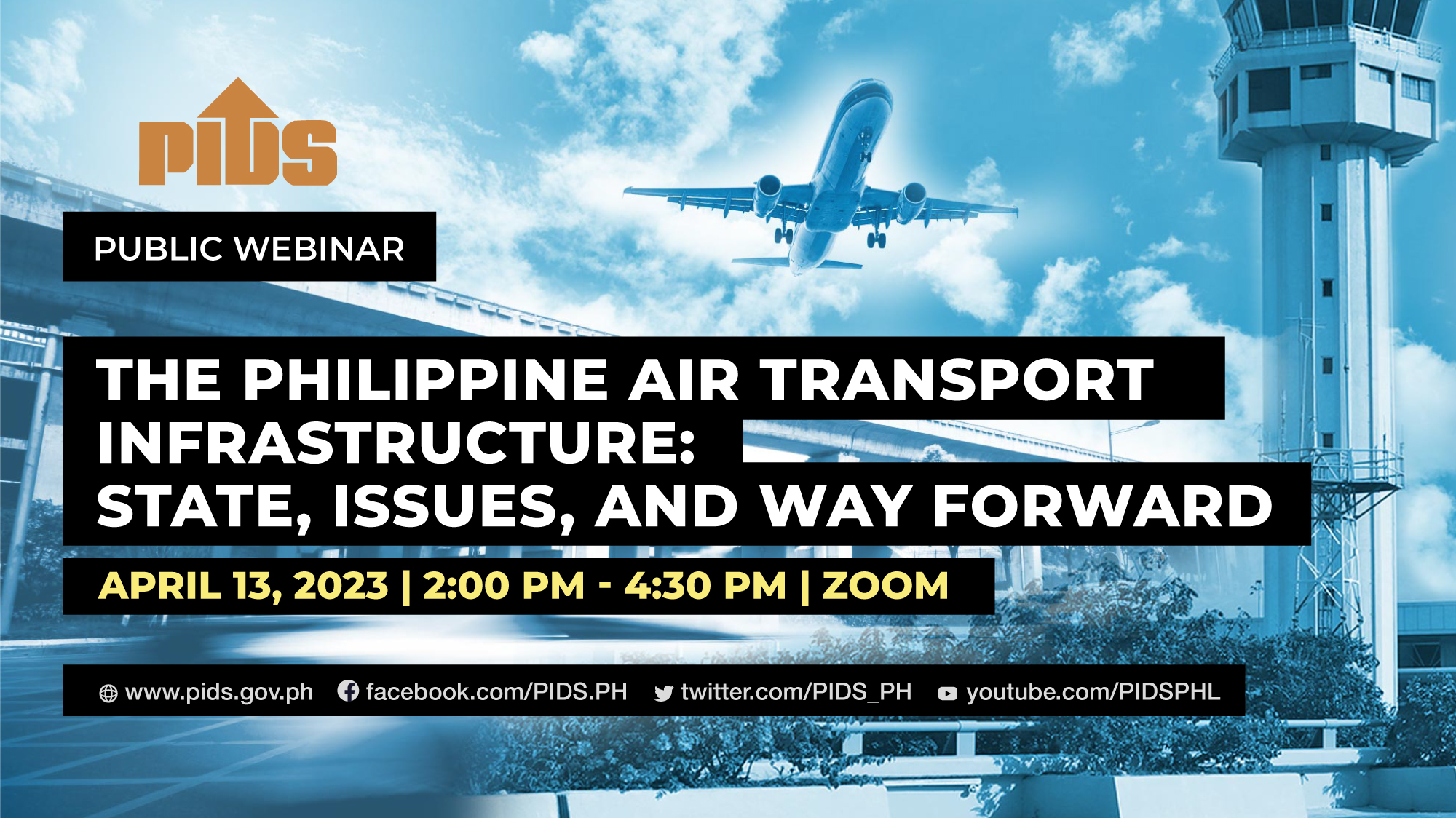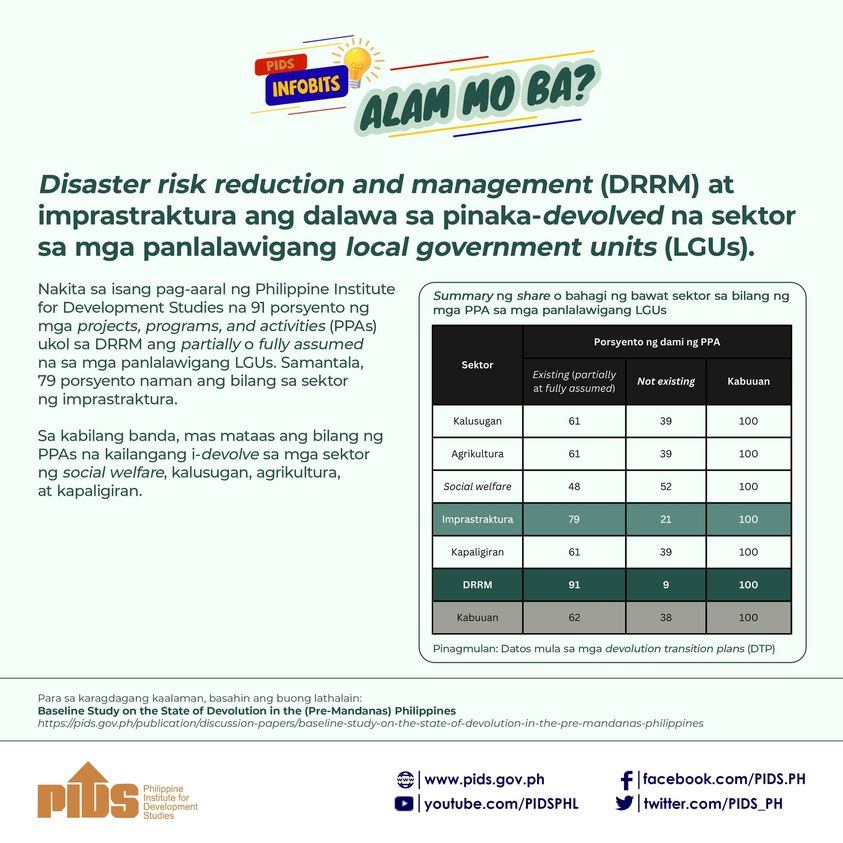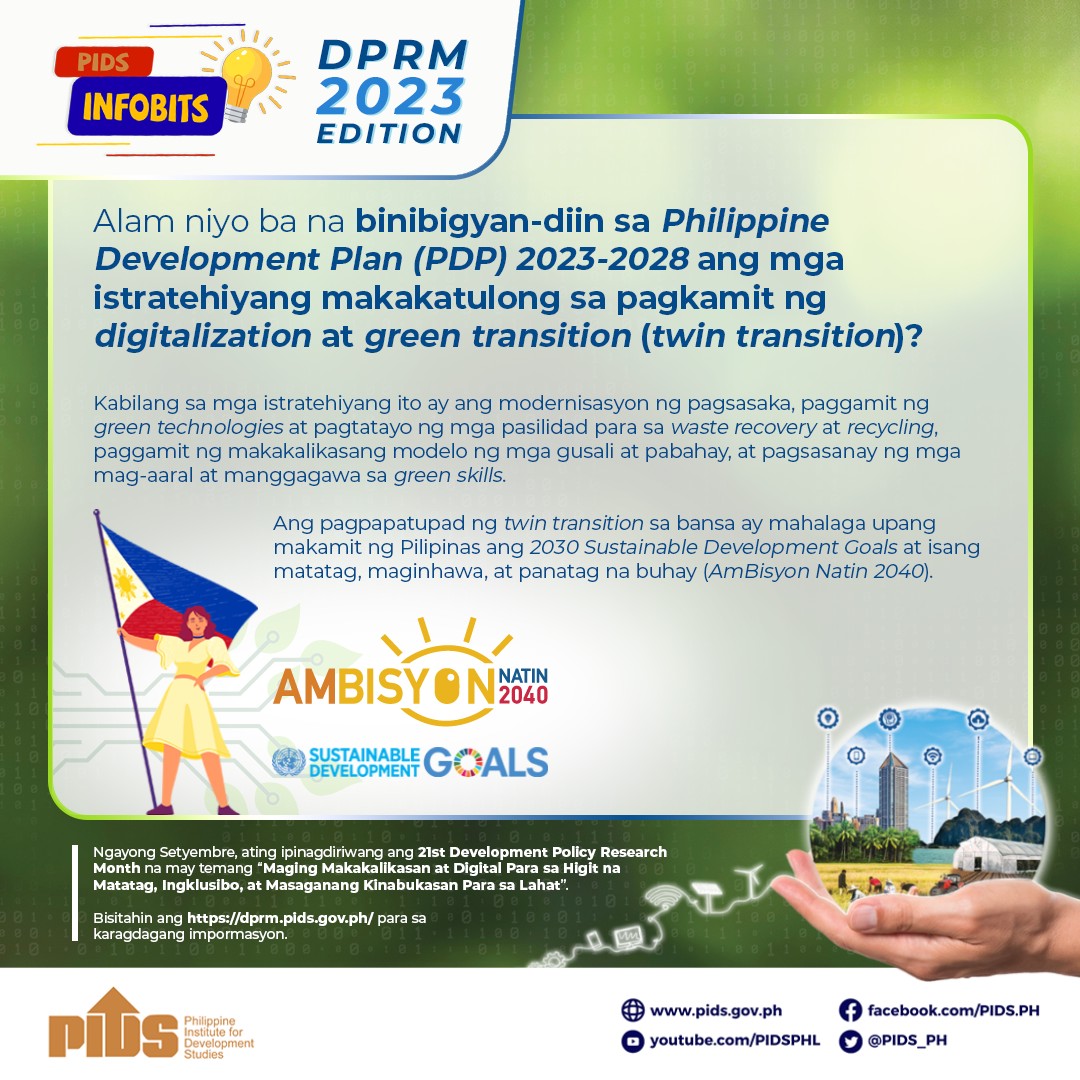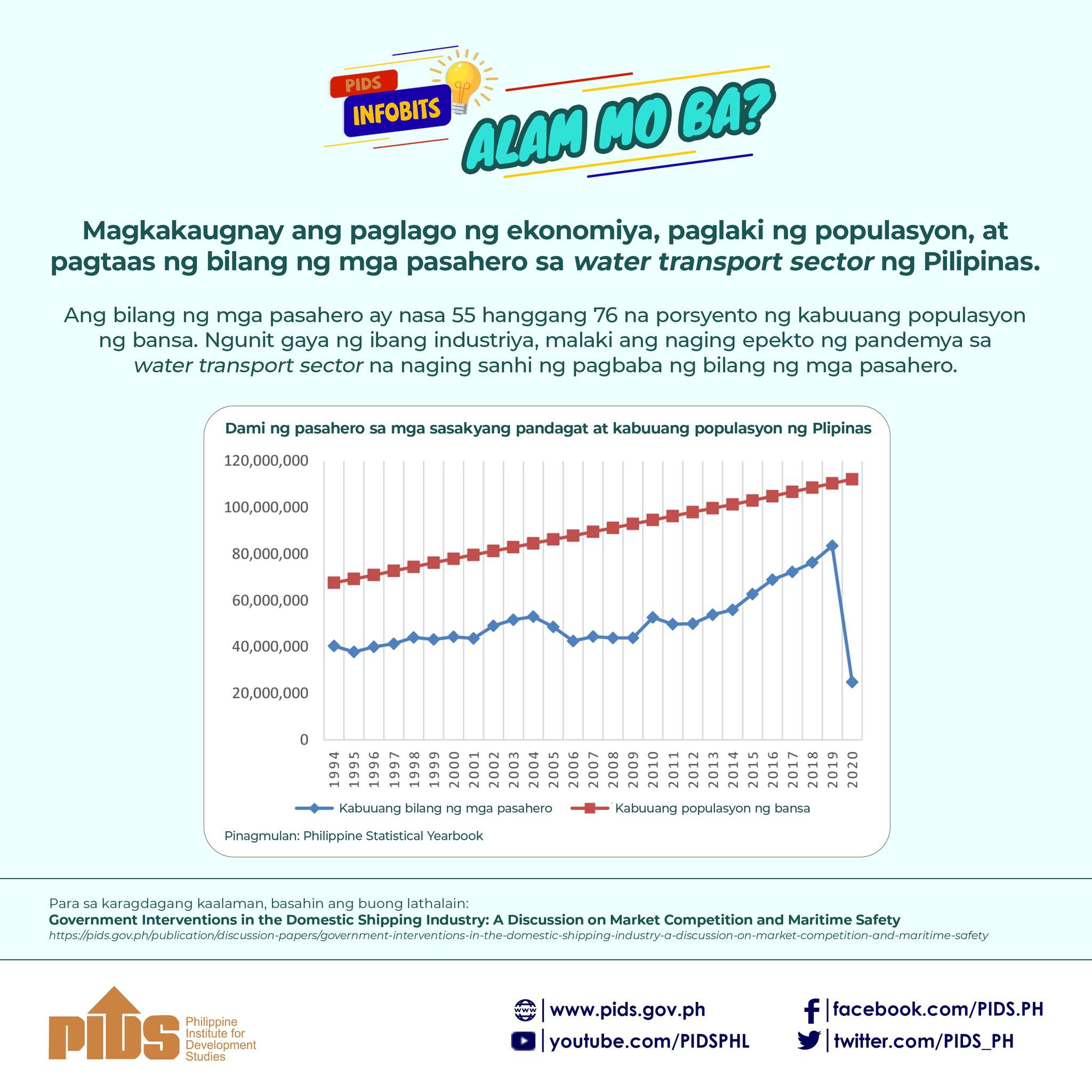Enacting a long-term national plan would help resolve the “inadequate and poor quality” of Philippine road and rail transportation infrastructure, state think tank Philippine Institute for Development Studies (PIDS) said in a statement.
The statement is based on a recent PIDS study entitled “Road and Rail Transport Infrastructure in the Philippines: Current State, Issues, and Challenges” authored by PIDS senior research fellow Adoracion Navarro and research analyst Jokkaz Latigar.
The study looked at the quantity and quality indicators of the country’s road and rail transport infrastructure and its interlinked stages of planning, programming, budgeting, implementation, and monitoring and evaluation.
The authors found many targets of the Philippine Development Plan (PDP) 2017-2022, the Public Investment Program, and the expenditure program remain unmet, mostly due to implementation issues. Among these are persistent problems such as the acquisition of right-of-way or strips of land used as a transportation route, lack of local government capability and funding, natural disasters, project management challenges, and political interference.
“It would be ideal for Congress to pass legislation establishing procedures for right-of-way planning and project prioritization in conjunction with a long-term transportation strategy. Seeking reform champions to reduce Congressional bill introductions and fast-tracking executive approvals are necessary,” the authors said.
They also identified new issues that adversely affect the road and rail transport sector, such as the pandemic’s detrimental effect on the materials and labor supply chain and the challenge of managing delays in projects supported by “for later release” funds from the national budget adjustments by Congress.
The Philippines continues to trail most of its Asian neighbors in terms of infrastructure competitiveness, according to the World Economic Forum’s 2019 Global Competitiveness Report. The country ranked 96th out of 141 economies.
One of the targets for the road transport sector under the PDP is to improve the international roughness index (IRI) for national primary roads from 4.62 in 2015 to 3.0 in 2022. Based on the latest Department of Public Works and Highways survey on IRI, there had been no improvement in the index, with the national average IRI deteriorating to 4.68 as of 2019.
In terms of rail transport, the Philippine National Railway (PNR) received criticism for its subpar and unsafe train platforms, delayed trains, and cancelled trips. Citing media articles, the authors added that postponements and cancellations sometimes occur without warning, due to signalling issues, accumulation of trash on rail tracks, and derailments, among other reasons.
“The rail transport sector had also suffered years of neglect. Despite recent attempts to catch up in the expansion and improvements, the task is simply gargantuan that the recent progress cannot be considered significant,” they said.
The authors recommended further capacitating local government units (LGUs) as they perform a bigger role in implementation, per the Supreme Court ruling on the Mandanas-Garcia case. Local chief executives and planners should begin preparing for transit-oriented development by envisioning the long-term requirements and establishing the plan and objective in a planning document.
“Completion and integration of local roads databases must be fast-tracked as accurate information will be important in scheduling national government support and prioritizing areas of support,” the authors said.
They also suggested benchmarking with other countries to reinforce the lessons from the “failures in Metro Manila’s urban rail transport systems” and improving pandemic-responsive procedures.
In the recently signed PDPD 2023-2028, one of the strategies put forward is the formulation and adoption of a National Transportation Master Plan, which will integrate land use and urban planning methodologies, and guide the rational development of an intermodal transport infrastructure network that takes into consideration compatibility, economic feasibility, comparative advantages, climate risks, and linkages of desired transportation modes. Mass transportation systems will be prioritized and the roll-out of the planned rail infrastructure projects will be pursued aggressively.

